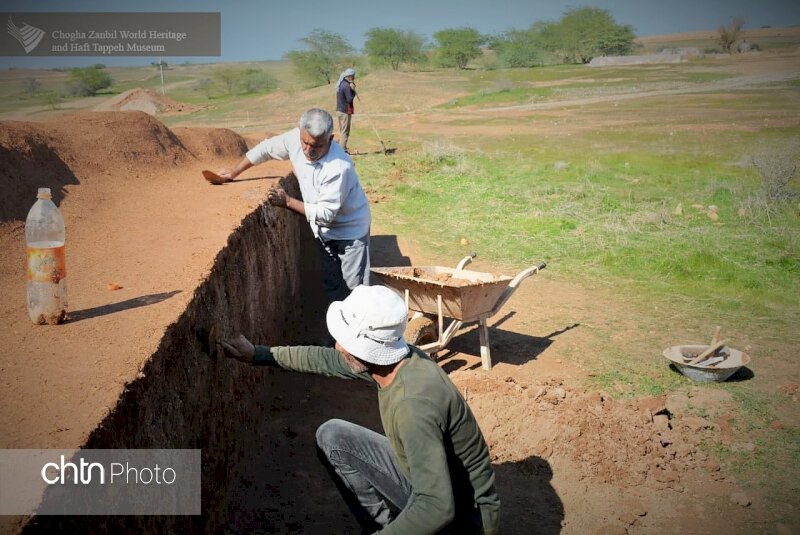Prehistorical gate leading to modern World Heritage undergoes restoration

TEHRAN – One of the gates of the UNESCO-registered Tchogha Zanbil, a ruined prehistoric ziggurat and a top tourist destination in southwest Iran, is being restored and preserved to maintain its originality, the director of the World Heritage site has announced.
Situated southwest of the ziggurat, the mud-brick monument, which is named Darvazeh Shush (“Gate of Susu”), has been damaged severely due to the seasonal rains, Atefeh Rashnoei said, CHTN reported on Friday.
The preservation and restoration project is being carried out under the supervision of the archeologists and experienced restorers based on traditional architectural methods of the time, the official added.
As with mud-built structures in this area, the Shush gate is fragile and vulnerable, and it’s for this reason that its restoration is so important, she added.
She continued by saying that one of the primary priorities of restoration work on various structures of cultural heritage sites is to maintain originality and use ecological materials.
UNESCO-listed Tchogha Zanbil is widely known as the world’s best surviving example of Elamite architecture. The ruined ziggurat stands in Khuzestan province, southwest Iran. It was made a UNESCO site in 1979.
According to UNESCO, Tchogha Zanbil is the largest ziggurat outside of Mesopotamia and the best preserved of this type of stepped pyramidal monument. Lonely Planet says that even if you’re not a fan of ancient ruins, the great bulk and splendid semi-desert isolation of the site can’t fail to impress. Try to catch it in the soft, golden light of late afternoon rather than the harsh midday sun.
The ziggurat is located approximately 30 km southeast of Shush and 80 km north of Ahvaz. Reaching a total height of some 25m, the gigantic monument was used to be surmounted by a temple and estimated to hit 52m during its heyday. Tchogha Zanbil was excavated in six seasons between 1951 and 1961 by Roman Ghirshman, a Russian-born French archeologist who was specialized in ancient Iran.
Ziggurats, in general, are pyramidal stepped temple towers that bear architectural and religious characteristics of the major cities of Mesopotamia from approximately 2200 until 500 BC. They were usually built with a core of mud brick and an exterior covered with baked brick. Approximately 25 ziggurats are known, being equally divided among Sumer, Babylonia, and Assyria, according to Encyclopedia Britannica.
ABU/AFM
Leave a Comment